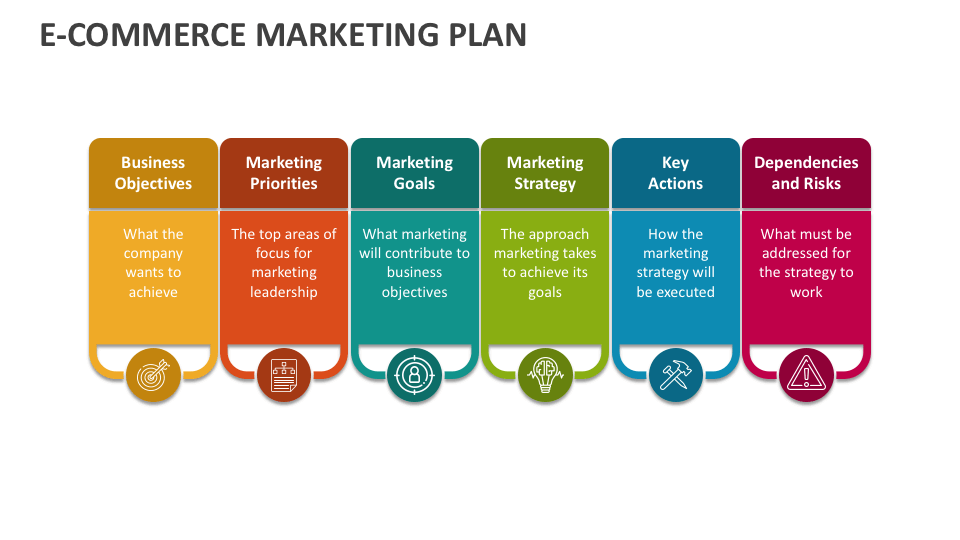The Keys to Successful E-Commerce Marketing Are Planning and Executing
Ecommerce marketing is a bulletproof practice that allows business owners to drive top-of-funnel traffic to their websites and convert leads into sales to generate revenue. The best part about ecommerce marketing is that there are many ways to go about it, but this aspect also makes it a bit complicated.
There are different strategies a marketer can employ when driving traffic to their website. This includes focusing on:
- Demand generation
- SEO
- Strengthening connections via appointment settings and social media
Some of these strategies are paid, while some are unpaid. It depends on the digital marketer which strategies they will combine to create an ecommerce marketing mix that will work for their business.
Considering how the digital industry is competitive and there are innovations every day that makes keeping up difficult. You need to create a marketing plan that will cater to all these aspects and promote your business despite all the hurdles that may come along.
You must consider several things while planning and executing an ecommerce marketing campaign, and this article will shed light on some significant aspects.
Keys to Building an Ecommerce Marketing Plan
As you prepare to lay down the foundation of your ecommerce business, go through the significant steps of planning your ecommerce marketing strategies to ensure your results are fruitful. You cannot just start posting Google Ads on your website to drive traffic.
An ecommerce marketing plan will include various strategies to help you achieve your goals. The strategies you opt for to market your business online will influence the kind of relationship you build with your audience.
Generating sales from cold leads requires a well-thought plan that involves securing leads down the sales funnel. Your marketing plan should involve getting along with your leads through appointment setting. Once you secure your leads, don’t leave them hanging.
Stick to your leads to convert them to sales. Set appointments and meet with them to discuss necessary information. It not only allows you to connect with your customer but also ensures you develop a direct relationship by listening to their concerns and offering them necessary solutions. Appointment setting services with your sales-qualified leads (SQLs) enables your ecommerce business to convert more leads to sales.
You need a well-thought plan that you can execute in a sure-shot way to succeed. Otherwise, your investment, time, and effort will go to waste.
1. Executive Summary
The first step of planning an ecommerce marketing strategy is to develop an executive summary that will hold all the details about your marketing plan.
The executive summary should include all the key points of your strategy, including:
- Your goals
- Expected results
- Project recommendations
The executive summary goes to all the executives of the organizations and decision-makers so they know how you plan to promote your business and what the leaders of the company have to sign on.
2. Objectives & Goals
Before planning, you must be very clear about your goals and objectives. Only then will you be able to design a marketing plan to accomplish those goals.
Also, if you realize that your goals and objectives aren’t realistic or are too high during the planning, don’t shy away from changing them. Your basic objectives must be attainable and realistic before diving deeper into your stretch goals to motivate your team.
These stretch goals can be anything. For instance, you can set a goal for your team to attain 1 million followers on your Instagram page within a year. This may seem impossible otherwise. However, once you have attained realistic goals, moving ahead with high-risk goals can set ultimatums to work better.
3. Mission Statement
While making an ecommerce marketing plan, you need to keep the following questions in perspective.
- What is the purpose of your company?
- What are you offering to your customers?
- What are your company’s limitations?
Having a mission statement will make it more comprehensive for your target audience to understand your business. They’ll be able to figure out what your brand stands for and what your company values are.
We don’t suggest that every company should have a philanthropic agenda. But whatever your mission statement is, it should be loud and clear.
4. Figure Out Your Target Market
Knowing your audience is perhaps the most crucial aspect of ecommerce marketing. You possibly cannot hope to promote your business if you have no idea who you’re promoting it to.
Figure out your target market, its location, and other demographics. If you don’t research your target market properly, you will simply run blindsided marketing campaigns for individuals who will never convert into customers. Understanding your audience’s needs and preferences can also help you collaborate with a Shopify agency in UK to fine-tune your store and marketing strategy for better results.
Here is what you should know about your target market:
- Gender breakdown
- Age range
- Geographic location
- Online shopping habits
- Purchasing power
Once you know all these aspects, it will be easier for you to drive more traffic and convert quality leads into sales.
5. Analyze Company’s Situation
If you wish for your marketing plan to succeed and achieve desired goals, you must thoroughly analyze the company’s current state.
Understand the user experience, study your competitors and figure out your competitive edge to promote your business. Once you understand your company’s situation better, you will have the power to make better and more informed decisions.
6. Pricing Strategy
It is imperative to know about your target market and their purchasing power, so you develop a pricing strategy that will add value for your customers. You shouldn’t hope your target audience will purchase your products if you haven’t worked on demand generation.
If you have, you must come up with market-competitive prices that won’t leave a hole in your customer’s pockets while generating revenue for your business.
Executing an Ecommerce Marketing Plan

Once you have created an ecommerce marketing plan, you will better understand how even the tiniest hindrances can cause a major glitch in your results. You must study your company’s state and your product’s demand in the market.
Moving on, let’s discuss the execution of an ecommerce marketing plan.
1. Determine Sales Strategy
Now, this is where the one-size-fits-all concept stops, and it is time for you to dive deeper into your company’s requirements to figure out which strategy is optimal for you. There are endless ways to market your company on the web today.
You need to figure out which strategies will suit your business model. Some of these strategies include:
- Social media marketing
- B2C and B2B demand generation
- Google ads
- Search engine optimization
- Influencer marketing
- Appointment setting
Your sales funnels have four stages, namely awareness, interest, desire, and action (AIDA). Now, you need to figure out various marketing strategies that you will employ in all these stages to convert leads into sales.
Ensure that all these strategies align with your goals and should fit accurately into your sales funnel.
2. Consider the Technology
Before you execute your marketing plan, here are some additional questions you must ask yourself.
- Is the technology you’re currently using to track the effectiveness of your marketing campaign adequate?
- Can you use it to determine whether the KPIs are improving?
- Will it help your marketing team determine the ROI of your marketing campaign?
Before investing money and effort in your marketing campaign, you must ensure the tools and reporting software you’re using are adequate. You cannot hope to make a difference in your campaign if you don’t know the results.
So, ensure the software and technology you’re using offers you comprehensive information on your strategies.
3. Calculate Conversions
Once you have rolled out your marketing campaign and traffic starts on your website, see how many leads it generates and how many leads convert into sales.
By the end of the day, the main purpose of your marketing campaign is to generate revenue. If your sales are going up, you’re doing things right and getting the return on investment you hoped you would.
4. Test New Strategies
Setting your marketing campaign into motion is the first step. You should be prepared to take things to the next level because otherwise, you won’t know what works and what doesn’t.
Allocate the budget for your marketing once you generate revenue and test new strategies. Analyze the results from your previous and current strategies to see which was a better scheme. You don’t need to have a huge budget for this.
Test your strategies on smaller test cases. If the results are positive, you can ask your company to raise the budget to implement the new findings in your marketing campaign.
5. Keep Going & Refine Your Strategies
Well done! Now you know how to plan and execute your marketing campaign. One thing you must know about digital marketing is that you have to be consistent. You cannot leave your campaign in the middle and hope it will generate results.
Keep refining your strategies based on your website insights and sales. Once you get the hang of it, you can partner with other businesses with the same target audience as you. Find creative marketing ideas to make an impression and maintain your digital presence.
Don’t forget to use social media to your advantage and create content that adds value to your customers.
Final Thoughts
These are the key factors to keep in perspective when planning and executing an ecommerce marketing campaign. It’s a long, time-consuming, attention-grabbing project, and you mustn’t take it lightly.
You must think out of the box to ensure your marketing campaign is successful. Now that everything has occupied space on digital platforms, it has become harder to see. There is so much information on the internet that users tend to get lost.
So, you need to design a marketing campaign that your target audience notices to rank your website higher. Use search engine optimization and content marketing to ensure your website ranks higher.
Create a marketing plan that can tackle the AI obstacles and make its way to the target market. It’s difficult for sure, but not impossible.
Read More:How to Optimize Your E-commerce Management in 2023




